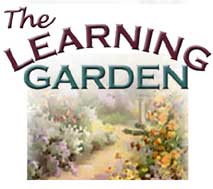
From Seed to Seed:
Plant Science for K-8 Educators
 |
From Seed to Seed: |
|
|
Activity 41: A Natural Fix Grades: K-8 Associated Lesson Topics:
National Standards: Planting the Seed... What is medicine? Students can interview people in the community (doctor, lawyer, teacher, parent, pharmacist, grandparent) about their definitions of medicine. What are some examples of medicine? Where do you get medicine? Do all medicines need to be purchased at the drug or grocery store? Do any of your families visit the health food store to get their medicine? What do they buy there? What plants do you know of that are used for healing purposes? Have you heard of other cultures using plants for medicinal purposes?
Teacher Information Plants have been used throughout history as sources of healing preparations, stimulants, and constitutionals-and even to repel demons. Folk remedies were often passed down from generation to generation. Your students can reenact this tradition by interviewing their relatives to see if they have traditional uses for herbs. These relatives can then teach students how to make some of their herbal remedies, thereby passing them on to the next generation. In some cultures, only privileged "witch doctors" or shamans were privy to this information. The following activities are designed to enhance a lesson on the use of plants in traditional cultures. Students will "become shamans" by creating their own herbal remedies. Through this activity, students will begin to understand which plant parts can be used to make herbal medicine and, in doing so, review plant anatomy. It is very important for you to instruct students never to concoct plant remedies on their own. Plants can hurt as well as heal! Necessary Materials:
Procedure: 1) Relaxation Pillow To create a relaxation pillow, students will make a poultice. A poultice is a mixture of herbs that can be applied directly to the skin without preparation. Grow chamomile and lavender. Dry and crush the leaves. Place a few tablespoons of each dried herb in a muslin bag. Fill the remainder of the bag with split peas. Close the bag with a ribbon or rubber band. Shake bag to evenly distribute herbs. To use: Spray the bag lightly with water. If you are treating a headache or muscle tension, heat the bag in a microwave for 1 minute. If you are treating an injury, place in freezer for 30 minutes. Consider having students design information cards to attach to their pillows. The information cards can describe the contents of the pillow, recommendations, and instructions for use. They can keep the pillows for themselves or give them to their parents for Mother's Day or Father's Day. Students can also make enough relaxation pillows to sell to the school community.
2) Tea Another easy way to prepare herbal remedies is to make an infusion. An infusion involves steeping dried and crushed leaves and flowers in boiling water to make a medicinal drink. Infusions can be used to treat many conditions. The herbs recommended below are known to soothe upset tummies.
Grow, dry, and crush chamomile, mint, basil, and rosemary. Put 1 to 2 teaspoons of fresh chopped herbs in a tea infuser. Steep in 1 cup of boiling water for 10 minutes. Drink and enjoy! Tea can also be made from a decoction.
Decoctions involve simmering plant parts (roots, bark, twigs, and berries)
to make a medicinal drink. Dandelion tea can be made using a root decoction.
3) Aloe Vera Of course, there are some plants that you can use without any preparation whatsoever. The most common of these is aloe vera, which is known to soothe and cure cuts, burns, skin rashes, and insect bites. Aloe plants are very easy to grow in the classroom. They are decorative, and the leaves can be snapped open to reveal the healing ooze inside! Harvesting the Crop... In addition to being sources for herbal remedies, some herbs can also benefit humans by repelling insects. Students can design and conduct an experiment to determine whether rosemary really repels insects. What part of the plant is most effective at repelling insects? How does the plant material need to be prepared to effectively repel insects? Are other plants known to have this benefit?
Please click the BACK button on your browser to return to the course. |
||
|
Made possible by a grant from Oracle Corp. Copyright 2001, National Gardening
Association, Inc. For questions regarding this web site, contact Webmaster |